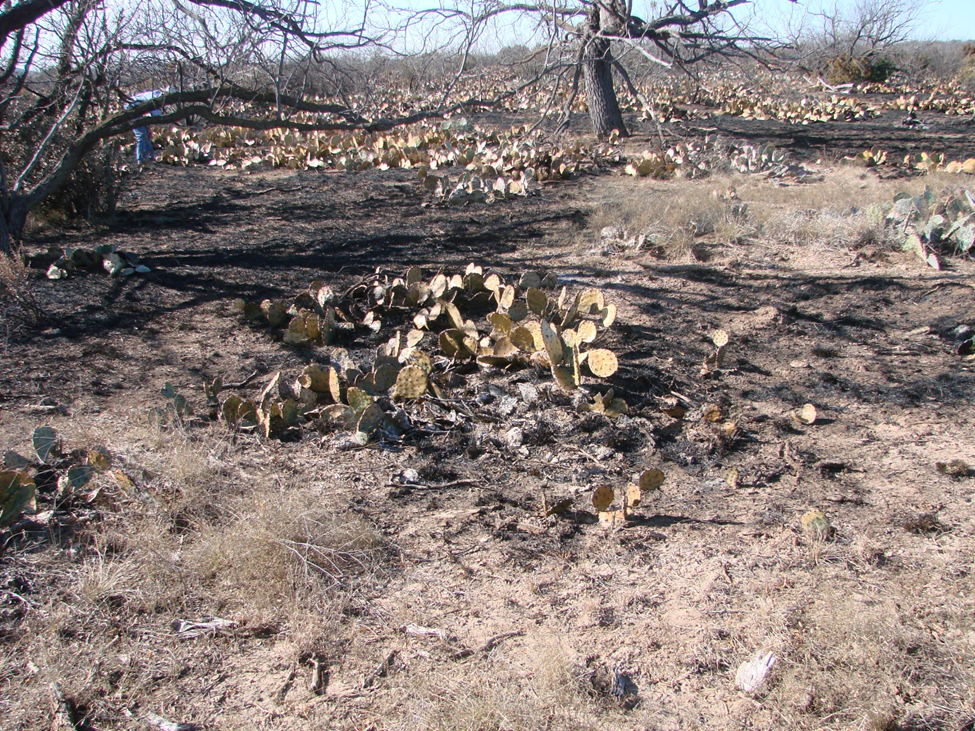Here are three photos of the burn in 2018, the first being a few days after the burn, take note of the large mesquite tree in upper center of photo. Of interest is Grant Teplicek on the far right. Grant is a very proficient-knowledgeable burn specialist with the NRCS, it is sad that the powers that be, have virtually stopped the use of these specialists. Not letting them participate in prescribed burns other than design of a burn. They cannot participate in the burn itself, to the point of if the fire escapes they are to do nothing to help control it.)
A very effective burn of relatively hot conditions, the second photo taken mid-February 2022, showing the same large mesquite in the first photo. (I recommend that when photo points of a burn are established not to use trees as the identification of a specific site as the tree may be top killed as a result of the burn and over time it becomes very hard to find that exact site.) Take note of the lack of visible prickly pear, yes there are several plants remaining but are covered by the vigorous grass community. The third picture is of a dead pear that has expired because of the burn and the density of the grasses and their root systems competing with the pear, no chemicals applied. Perhaps aided by insects and unknown microbial activity as a result of the more intensive graze rest management program.
It is my belief that the first prerequisite of any rangeland recovery program is establishment of an effective graze-rest management program.
THE BETTER IT GETS THE FASTER IT GETS BETTER


